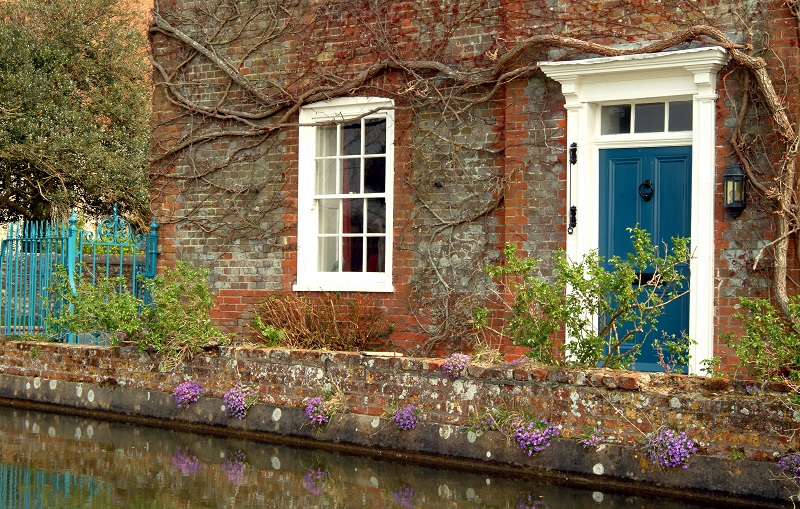Designing future heritage buildings

|
When ladies and gentlemen were drawing up plans for new homes in the early centuries - sourcing materials from nearby lands, shaking hands with craftsmen to mould custom keystones, laying every brick by hand with care - no one could have imagined how the 21st-century modern building would compare. What was an industry that went to great lengths to create character and resilience through each material selected, each person involved and each individual who lived and loved the place over generations, has transitioned to a wasteful mentality where buildings are built and demolished within a single career. Where along the line did we start treating buildings with the same consumerist mentality as 'fast fashion' and stop designing buildings that would be valued for generations as future heritage buildings?
The beauty of the listed building stock is defined by the lost art of skilled trades and craftspeople whose creative pieces have since been taken over by mass-produced manufactured goods. Where carved stone and later terracotta and faience were once highly-desirable building materials, they lost fashion when cheaper alternatives such as precast concrete overtook the industry. And with it went the skilled labour force, meaning today’s workforce does not hold the same skillset to reintroduce construction craftsmanship, nor is there a desire to pay a premium for handcrafted traditional materials.
Stone buildings, widely recognised in the UK, most notably along Regent Street in London, represent an important contribution to the heritage building stock made up of localised UK stone. primarily from Portland, Dorset. Today however, high-quality stone facades are imported all the way from China, raising concern when these stones eventually need to be replaced. Will these too need to be imported from China to find an exact colour and textural match, or will the whole façade have to be removed and replaced? One of the great values of listed buildings is the inherently localised sourcing which enables selective renovation, reduces transport emissions and supports a local economy.
The existing UK housing stock is made up primarily of traditional clay brick and lime mortar construction – which given the flexibility of the mortar, can be unbonded, the bricks reused and mortar recycled at a building’s end of life. Modern day brick construction however opts for the cheaper, rigid alternative - Portland cement mortar cannot be unbonded from the brick and therefore eliminates the opportunity for reuse. And worse, selecting brick render introduces a multitude of other building products glued together, creating a composite material which cannot be segregated even for recycling. The UK’s building landscape relies on the traditions of brick construction, though it should not be compromised using rigid glues and mortars that hinder its ability to play a part in the circular economy.
Time and again, people point to the Victorian terrace as an example of longevity of the building stock. With their bay windows, high floor-to-ceiling heights and flexible interiors, the Victorian terrace has been lovingly adapted by the modern family. Moreover, the Victorian terrace is rooted to its location through its materiality, from the yellow stock in London to the red brick of Derbyshire, and to the warm Bath stone in the south of England. The simple truth is that we rarely see such flexibility in modern design, nor is there such an obvious physical connection to the local surrounds so it is no wonder that we trip and stumble our way toward a circular economy.
There is a lot to be learned from our existing listed building stock that if reintroduced into modern practice could dramatically reduce the construction sector’s embodied carbon and waste, create social cohesion and extend the lifetime of valuable buildings as material banks. Making careful design choices to suit modern-day building needs while sympathetically responding to the history of a site through material choices must be a consideration for all sustainable building design.
[edit] About this article
This article was written and posted in May 2019 by KLH Sustainability, a consultancy which aims to change mind-sets and ways of working to enable successful implementation of sustainability. See here for more articles by KLH.
[edit] Related articles on Designing Buildings Wiki
- Conservation area.
- Conservation.
- Conservation in the heritage cities of Venice and Liverpool.
- IHBC articles.
- Finding stone to conserve historic buildings.
- The Institute of Historic Building Conservation.
- Regeneration.
- Sourcing indigenous stone.
- Sustainability.
- Towards an urban renaissance.
- Urban design.
- World heritage site.
IHBC NewsBlog
Old Sarum fire in listed (& disputed) WW1 Hangar - Wiltshire Council has sought legal advice after fire engulfed a listed First World War hangar that was embroiled in a lengthy planning dispute.
UK Antarctic Heritage Trust launches ‘Virtual Visit’ website area
The Trust calls on people to 'Immerse yourself in our heritage – Making Antarctica Accessible'
Southend Council pledge to force Kursaal owners to maintain building
The Council has pledged to use ‘every tool in the toolbox’ if urgent repairs are not carried out.
HE’s Research Magazine publishes a major study of the heritage of England’s suburbs
The article traces the long evolution of an internal programme to research 200 years of suburban growth
IHBC Context 183 Wellbeing and Heritage published
The issue explores issues at the intersection of heritage and wellbeing.
SAVE celebrates 50 years of campaigning 1975-2025
SAVE Britain’s Heritage has announced events across the country to celebrate bringing new life to remarkable buildings.
IHBC Annual School 2025 - Shrewsbury 12-14 June
Themed Heritage in Context – Value: Plan: Change, join in-person or online.
200th Anniversary Celebration of the Modern Railway Planned
The Stockton & Darlington Railway opened on September 27, 1825.
Competence Framework Launched for Sustainability in the Built Environment
The Construction Industry Council (CIC) and the Edge have jointly published the framework.
Historic England Launches Wellbeing Strategy for Heritage
Whether through visiting, volunteering, learning or creative practice, engaging with heritage can strengthen confidence, resilience, hope and social connections.














